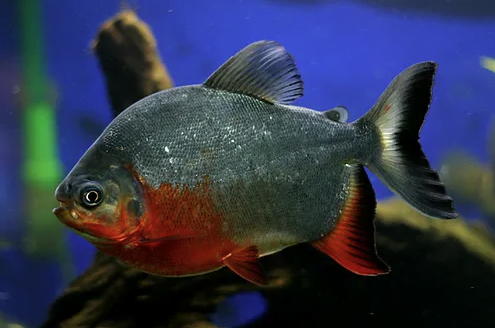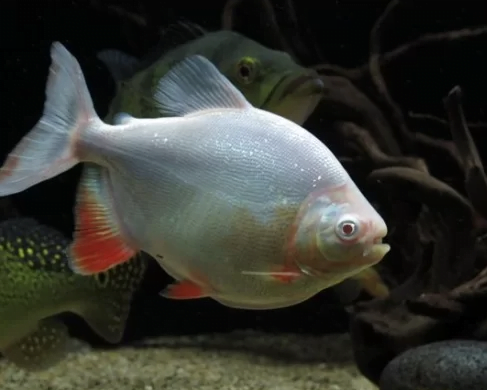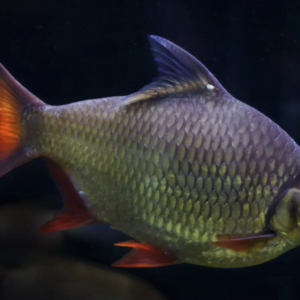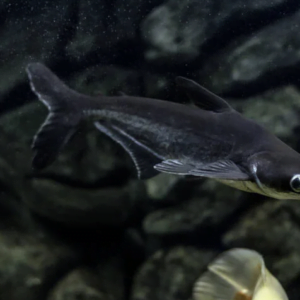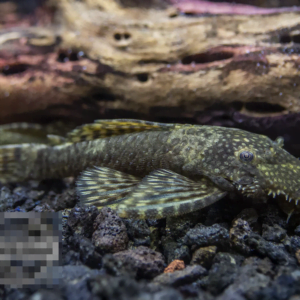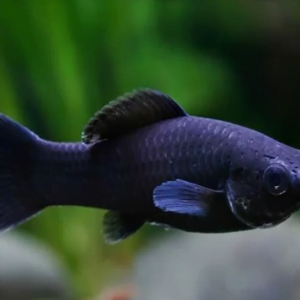Purchase this Product and Earn 1.50 Reward Points (₱1.50)
Red Belly Pacu
Earn 1.50 Reward Points
₱150.00
Categories All, Fresh-Water Fish, Monster Fish
Your live fish may not match the image shown due to natural variations in each species. Each companion animal is different in shape, color, and personality.
Scan to Purchase
Here’s a care guide for Red Belly Pacu (Piaractus brachypomus) in bullet points:
Tank Setup:
- Large Tank: Red Belly Pacus can grow quite large, so start with a tank of at least 300 gallons for juveniles and consider upgrading to a larger tank as they grow.
- Strong Filtration: Invest in a powerful filtration system to maintain water quality, as Pacus produce a lot of waste.
- Substrate: Use sand or fine gravel as substrate to prevent injury to their barbels.
Water Conditions:
- Temperature: Maintain water temperature between 72-82°F (22-28°C).
- pH Level: Keep the pH between 6.0 and 7.5.
- Water Hardness: Maintain moderate water hardness (5-12 dGH).
- Regular Water Changes: Frequent water changes are essential to keep water parameters stable.
Diet:
- Herbivorous to Omnivorous: Red Belly Pacus are omnivores, but their diet primarily consists of plant matter and vegetation.
- Offer a Variety: Provide a diet of high-quality pellets, vegetables (like lettuce, zucchini, and spinach), and occasional live or frozen foods like bloodworms and brine shrimp.
- Avoid Overfeeding: Don’t overfeed, as they are prone to obesity.
Tank Mates:
- Compatibility: Red Belly Pacus can be territorial and may display aggression as they grow. Best kept in a single-species tank.
- Solitary Species: Consider keeping only Red Belly Pacus in the tank, as they may become aggressive towards other fish.
Behavior and Activity:
- Diurnal: Red Belly Pacus are primarily active during the day.
- Swimmers: They are strong swimmers and need ample swimming space in the tank.
Tank Decor:
- Minimal Decor: Red Belly Pacus can be quite destructive, so use minimal decor and avoid live plants that they may uproot.
- Provide Large Hideouts: Include large caves, driftwood, and PVC pipes for them to hide in.
Health and Disease:
- Quarantine New Fish: Quarantine any new additions to the tank to prevent disease outbreaks.
- Monitor Health: Keep an eye out for signs of stress or disease, such as loss of appetite, rapid breathing, or unusual behavior.
Breeding (Difficult):
- Breeding Difficulty: Breeding Red Belly Pacus in captivity is challenging due to their large size and specific breeding requirements.
- Separate Breeding Tank: You’ll need a separate tank with optimal conditions to induce breeding behavior.
Handling and Safety:
- Beware of Sharp Teeth: Red Belly Pacus have strong jaws and sharp teeth, so be cautious when handling them to avoid injury.
Legal Considerations:
- Check Local Regulations: Ensure you comply with local and international regulations regarding the keeping of Red Belly Pacus, as they are a regulated species in some areas.
It’s important to understand that Red Belly Pacus can grow rapidly and require a lot of space, proper care, and attention to their dietary and environmental needs. Additionally, they have specific care requirements that need to be met to ensure their well-being in captivity.
| Size | Small, Medium, Large, XL, XXL |
|---|

